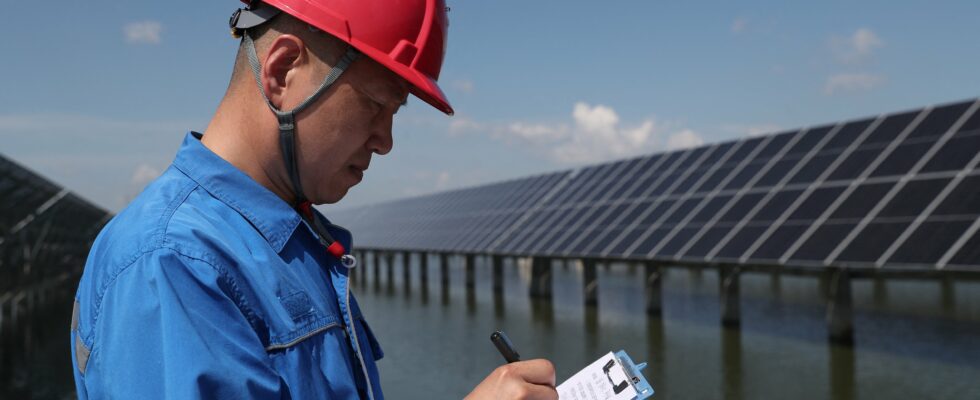Is China in the process of changing? The world’s second largest economy and the largest annual emitter of greenhouse gases is under close scrutiny, as what is happening there will have repercussions on our common ability to stem global warming.
In this context, the results of a recent study from the Carbon Brief website China’s quarterly emissions data provide some hope. According to figures presented by Lauri Myllyvirta, a senior analyst at the Centre for Research on Energy and Clean Air (CREA) and author of the paper, China’s emissions fell by 1% in the second quarter of 2023. This is the first time since the end of the Covid-19 epidemic and the economy reopened.
Since the 2000s, the country’s greenhouse gas emissions have been growing steadily, driven by the energy and industry sectors. This shift, which confirms the 3% drop observed in March alone by Lauri Myllyvirta, could allow China to reduce its annual emissions. Better still, according to the author, the country could even have reached its peak last year. A delightful prospect… which still raises several questions.
Will the decline continue outside of any economic context, while the Chinese economy is slowing down under the effect of a fragile recovery and a crisis of overproduction? Part of the decline observed is due to the ambient gloom in the construction industry, which affects cement production and oil consumption – “the construction sector being a major source of demand for petroleum products for freight and machinery”, recalls the expert.
Electrification of the vehicle fleet
Nevertheless, this cyclical phenomenon should not overshadow the proactive structural measures, which are all signals of a transformation of the Chinese energy system. This year, the already massive development of renewable energies in the country could reach a new record. In 2024, China added 102 gigawatts (GW) of solar energy and 26 GW of wind energy in the first half of the year, representing growth of 31% and 12% respectively compared to the same period in 2022. For a point of comparison, Lauri Myllyvirta specifies that the increase in green electricity production in China in the first half of the year exceeded the total electricity supply of the United Kingdom over the same period.
“It’s huge, and no one expected such enthusiasm for solar,” emphasizes Thibaud Voïta, associate researcher at the Energy & Climate Center of the French Institute of International Relations (Ifri). Thus, despite an economy that is increasingly greedy for electricity – + 4.2% in the second quarter – the growth in demand has been largely offset by new capacities in solar and wind power, which has made it possible to limit the use of fossil fuels such as gas and coal. The same observation is made for the automobile fleet. Electric vehicles, which represent 11.5% of new sales, are increasingly contributing to lower fuel consumption, down 4% this year.
Despite its investments in renewable energy, China’s energy mix is still very largely carbon-based: in 2023, more than 60% of its energy production came from coal. But there are also some trends that are cause for smiles. The use of coal has declined due to new green energy capacities. A trend that could even suggest that “the absolute decline of electricity produced from coal is in sight”, underlined a report from the think tank Ember Climate, published in early August. Public policies, increasingly targeted, are in tune: for several months, the authorities have no longer issued permits for new coal-fired steelworks.
Pledges to the rest of the world
Will all this end up making China a good climate student? “There are still monumental environmental and social issues, but when we analyze the government’s decisions on monetary policy or accounting standards, we start to see the weak signals of a real change,” notes Alexandre Rambaud, lecturer in accounting at AgroParisTech – Université Paris-Saclay. In early August, China’s economic planning agency announced a change in the way China will now account for its CO2 emissions reductions.
The country, which until now set itself climate ambitions based on the carbon intensity of its growth, i.e. greenhouse gas emissions relative to the wealth produced, has indicated that it will now set itself reduction targets expressed in volume. A way of getting into line with carbon accounting, and asserting its environmental design. “The future of international discussions will largely focus on climate and sustainability, and China wants to send a message to the United States and the rest of the world to show that it can be a champion in this area too,” explains the researcher.
Beijing has promised to peak emissions by 2030 and achieve carbon neutrality by 2060. It still has a long way to go. Although CO2 emissions declined in the second quarter of this year, the country’s carbon intensity decline has not reached the level needed to meet its own commitments… for 2025. Progress, then. But not yet top of the class.
.
